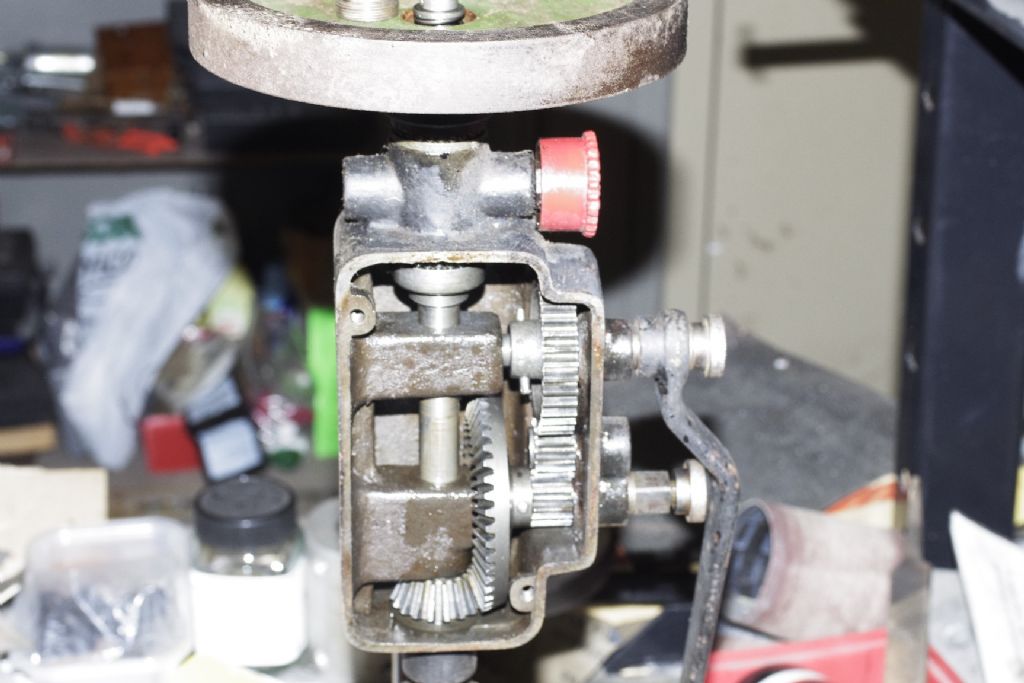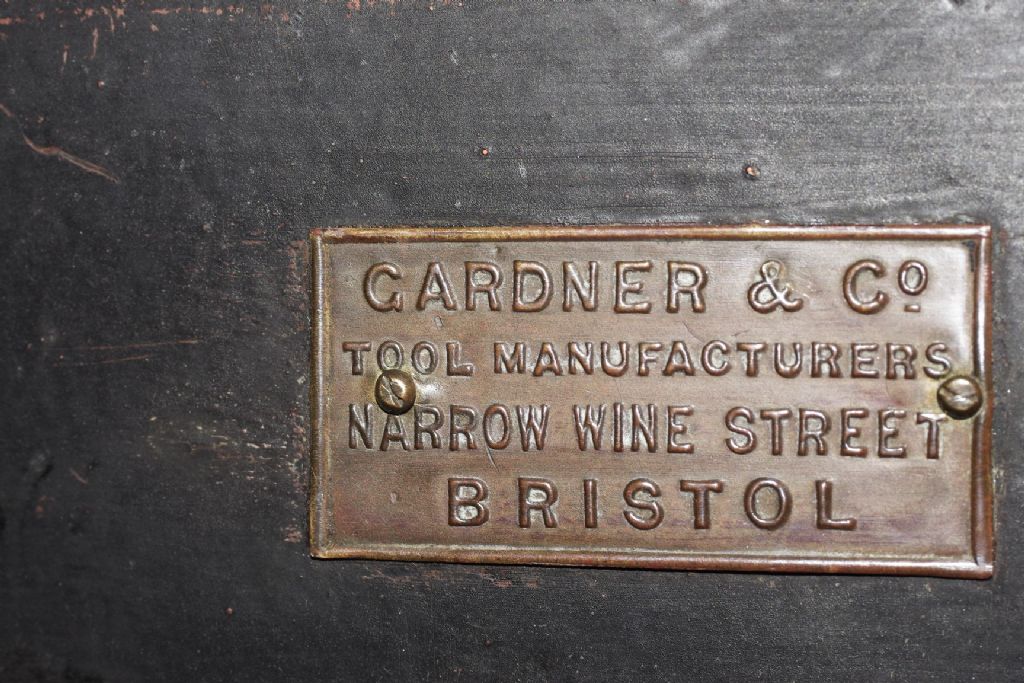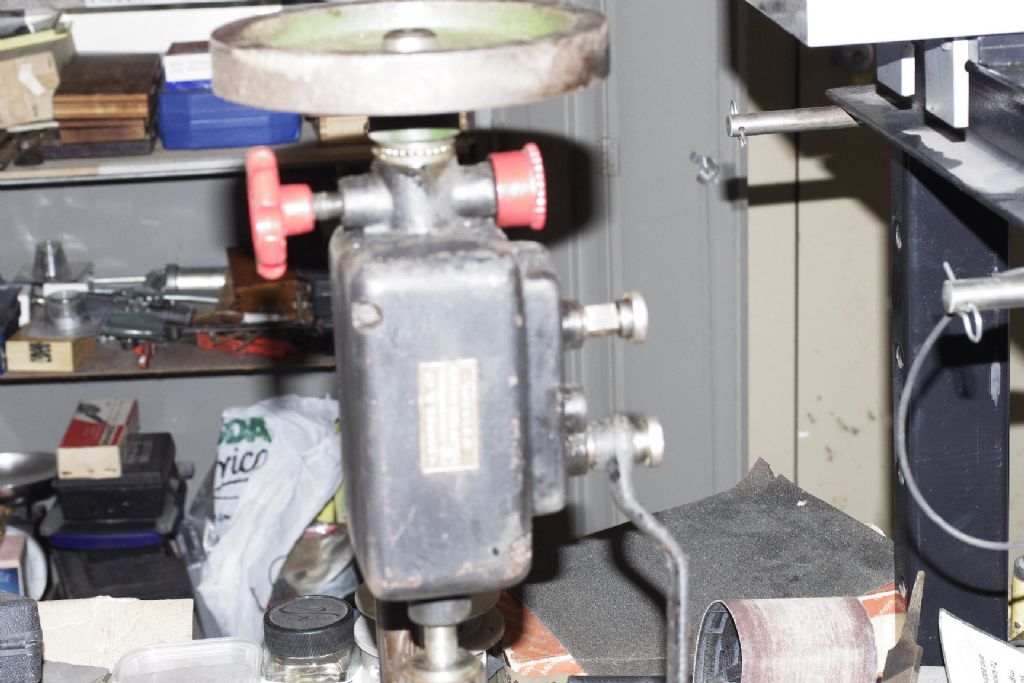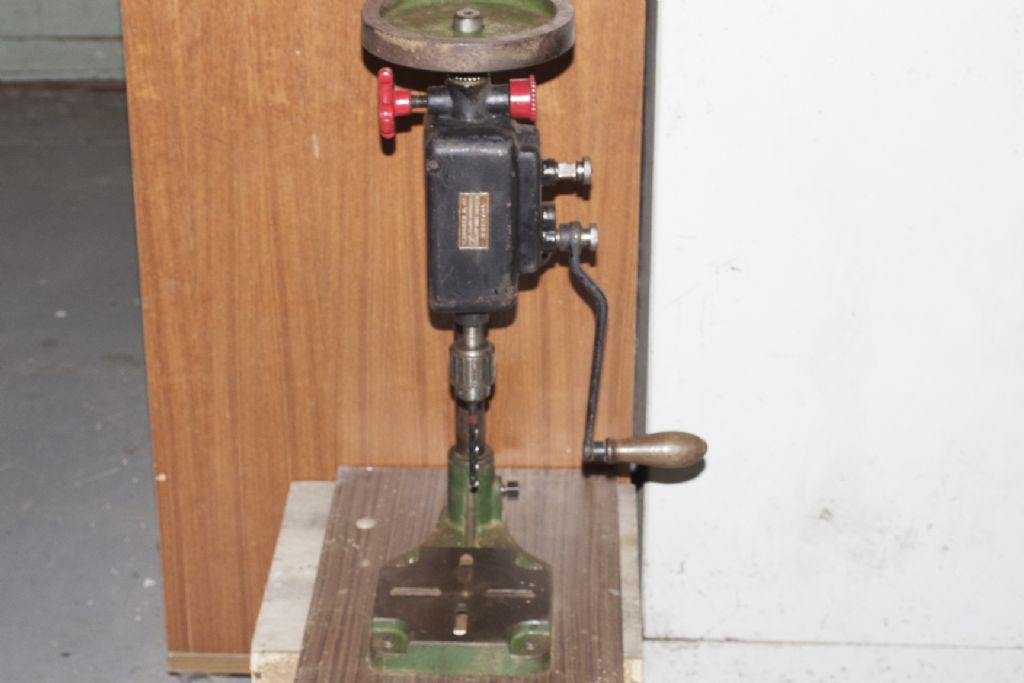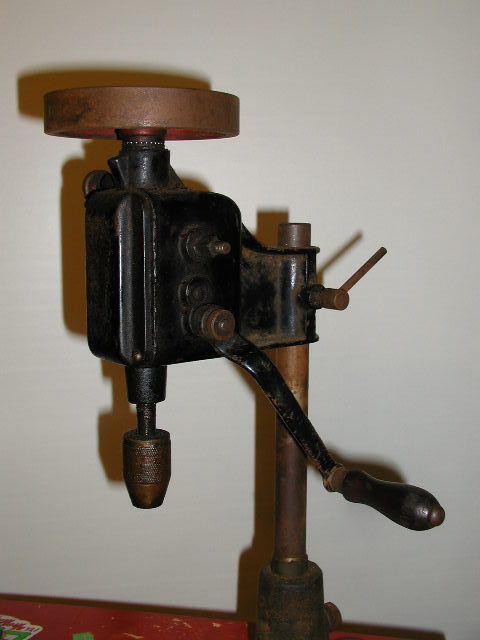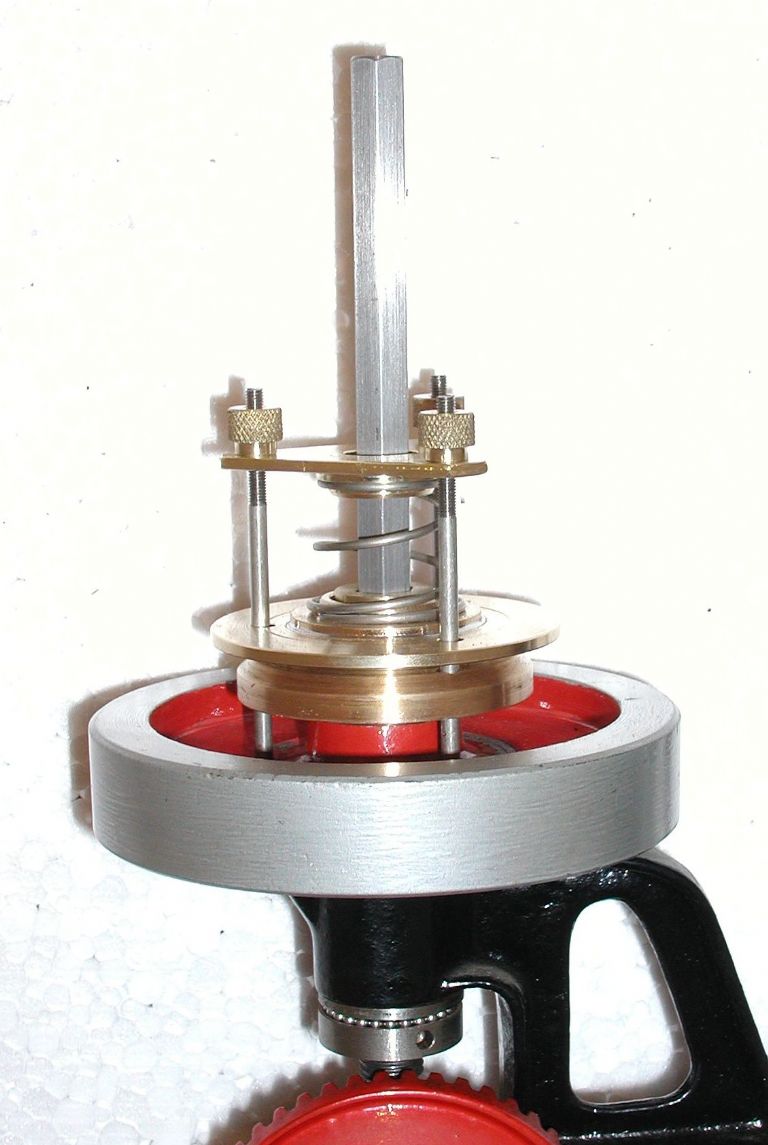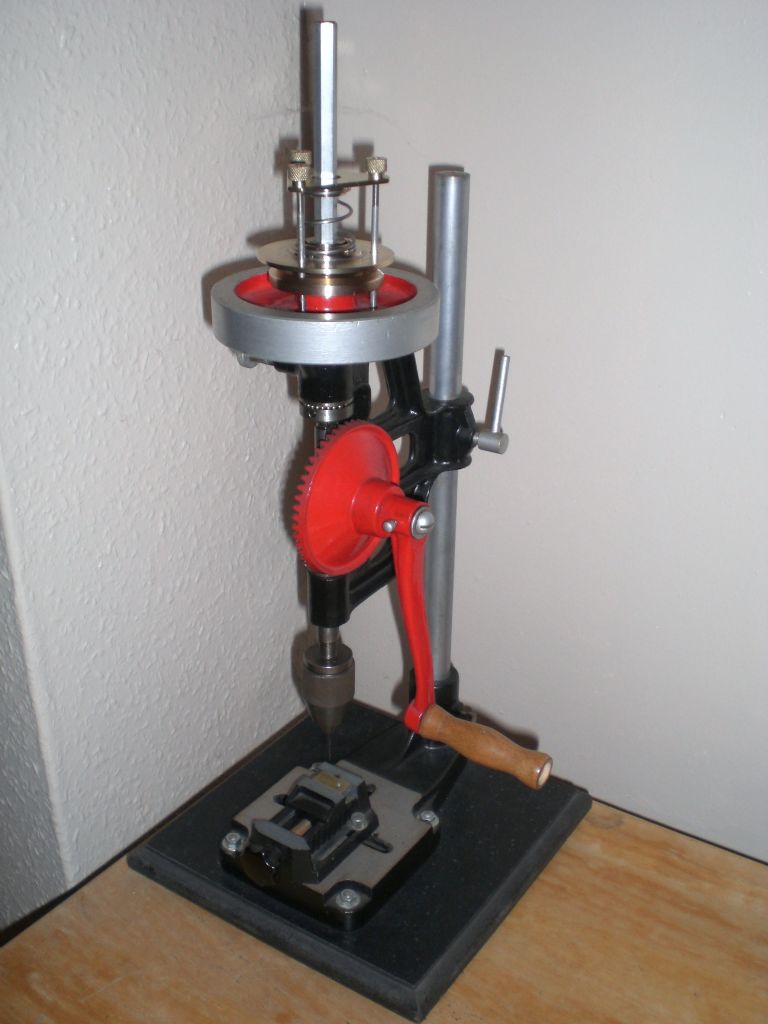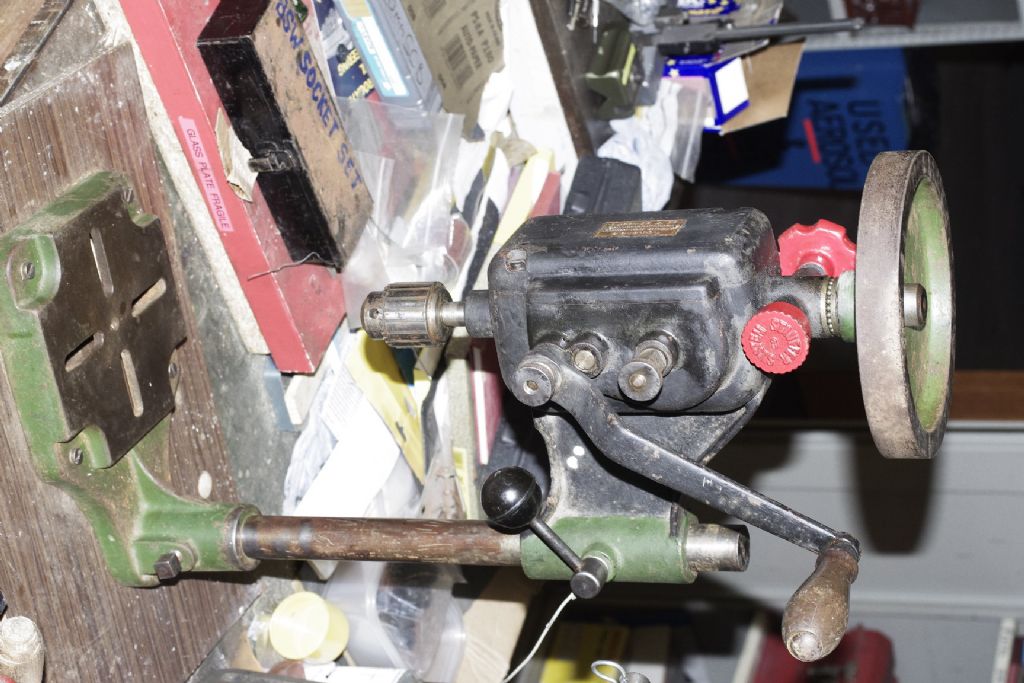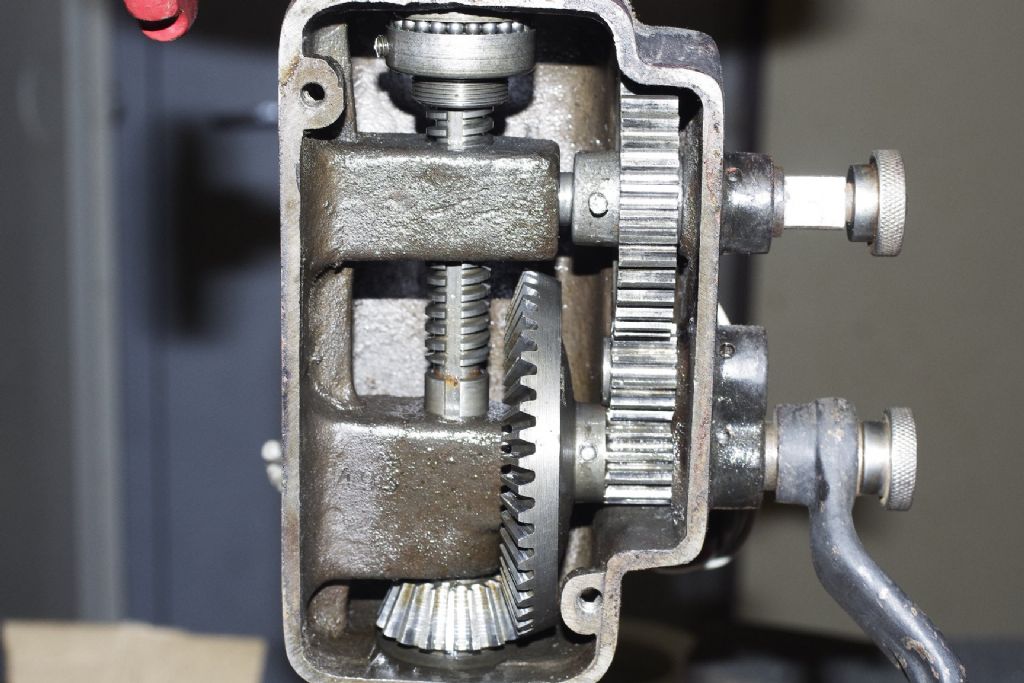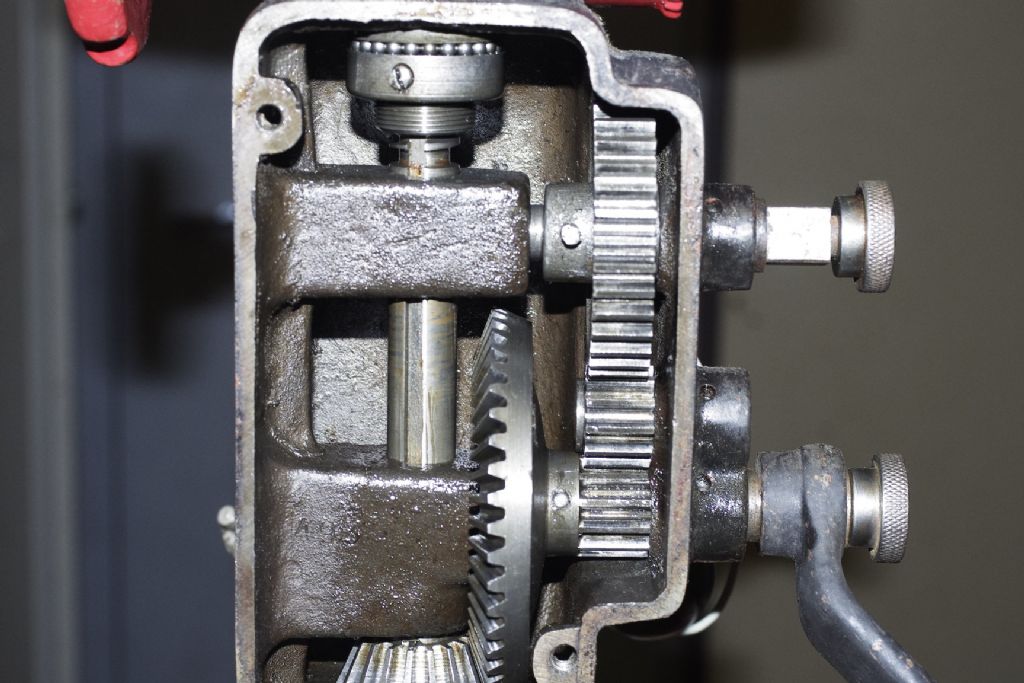The flywheel has a female thread inside it. The spindle has a male thread outside it.
If the flywheel and spindle rotate at the same rpm, no downfeed occurs. If the spindle goes faster than the flywheel, downfeed occurs. The adjusting knob allows you to regulate the 'slip' between the two parts. For a small drillbit, you loosen it so they try to rotate together. For a large drillbit, you tighten it so downfeed pressure is increased. For a really big bit or a bit that is blunt, you have to apply braking pressure to the flywheel with your hand.
I have two machines that work on similar principles. Even with the adjuster completely loose, with small bits, the feed is sometimes too fierce.
When withdrawing the bit, you have to do so slowly so as to be careful not to let the two threads top out and jam together. If you spin too fast in reverse, next time you go to drill a hole, you will turn the handle for a week and no downfeed will happen as the flywheel and spindle are tight together. Again, to remedy this, you have to grasp the flywheel while turning the handle to loosen the jam and initiate the downfeed
DMB.


